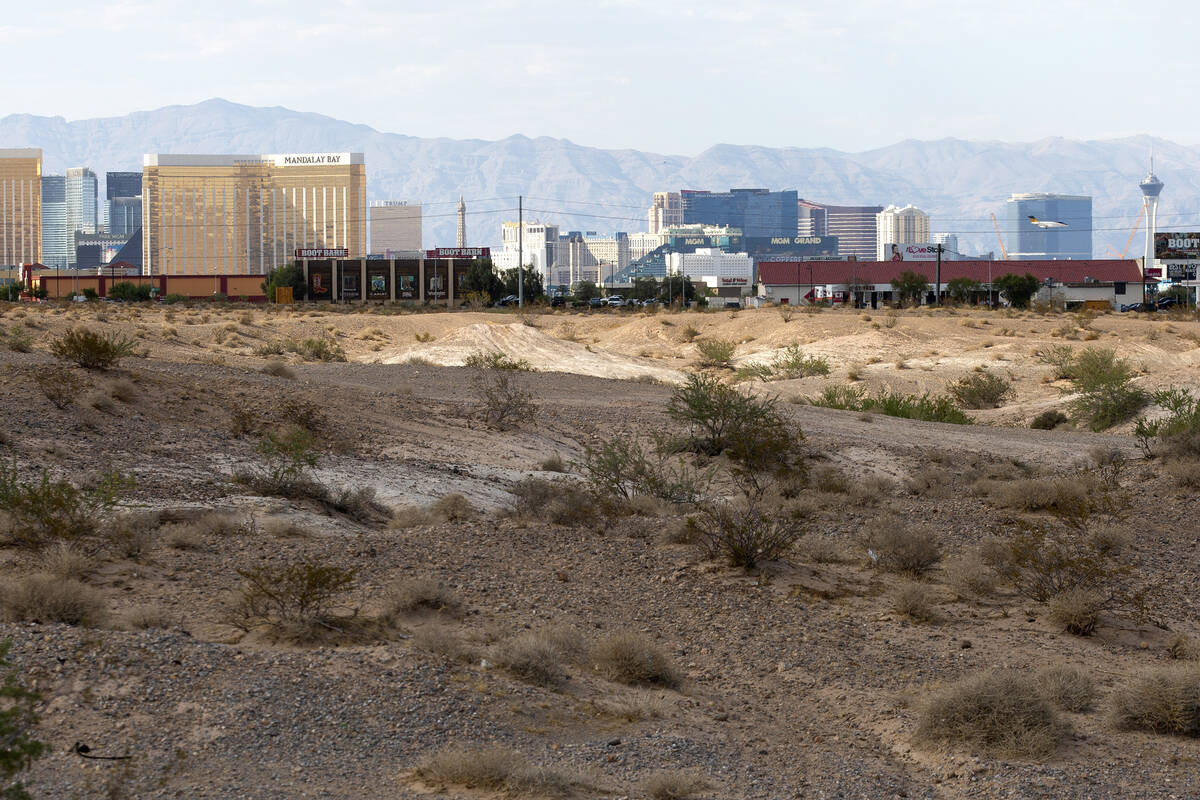Commercial land prices double in Las Vegas Valley
The federal government is the biggest hurdle in fixing the Las Vegas Valley’s ongoing land crisis, prominent land developers claim.
Nevada finds itself in the most unique of positions because the Bureau of Land Management controls 88 percent of Clark County alone, the largest percentage in the country, said George Garcia, founder of G.C. Garcia Inc., who has been working in the land planning and development services sector for more than 30 years.
“This is by far the dominant issue,” he said. “If you go to Arizona, Texas, places like that which are high growth areas, they don’t have that constraint. And so, that is an enormously limiting factor because it chokes the development and expansion.”
The Southern Nevada Public Land Management Act passed in 1998 identified around 67,000 acres out of the 2.9 million available for disposal in the Las Vegas Valley that could be utilized for either commercial or residential development, said former BLM employee Mike Ford in an interview with the Review-Journal. Around 33,000 acres of smaller BLM parcels littered throughout the county also are identified for disposal and could be developed.
Because of the shortage of buildable land, the price per square foot of commercial land has doubled in the past two years in the Las Vegas Valley, according to Colliers International’s second-quarter commercial report, as it now sits at $16.56 per square foot, compared to $7.50 a square foot halfway through 2022.
And on the residential side, home prices have jumped close to 40 percent since 2020, according to the Freddie Mac House Price Index of Appreciation. The price of materials to build homes has increased close to 40 percent as well since 2019, according to the Producer Price Index.
Theresa Coleman, district manager of the Southern Nevada District Office for the BLM, said in an email response to the Review-Journal there is approximately 27,000 acres of BLM managed land remaining for disposal and that interested parties must first identify the parcels to the local government where the land is located.
“If the local jurisdiction agrees to the parcel sale, it submits a nomination to sell the land by the BLM. BLM then completes the necessary processes to ensure the parcel may be offered for sale,” Coleman said. “Since 1998, almost 44,000 acres have been disposed within the boundary through land sales” and other means.
Ford said the goal was for the BLM to be “totally out of the urban land management business” within five to 10 years of the 1998 act, however that never happened.
Supply and demand
Brad Nelson, who runs a consulting company that provides development advisory services for projects in Nevada, California and Hawaii and has worked within the land development industry for close to 40 years, said governments at all levels have increasingly sought to control the market and the development process and then offer government programs as the solution to those very problems. He said the BLM is tipping the scales of the oldest economic models: supply and demand.
“That’s the cause of the crisis, and it reflected in the price of the product. Because there is fewer product, the prices go higher,” he said. “In most markets a builder can acquire land about anytime they desire, not in Las Vegas since so much of the undeveloped land is controlled by the BLM auction process.”
Nelson said after getting the land through the BLM process, then local government comes in and there are a plethora of hoops to jump through including land use plans, master plan amendments, reports such as grading, drainage, fiscal impact, environmental reviews, vegetation, geology, parcel maps, site plans, architectural reviews and building permits, just to name some of the bureaucracy attached to developing.
He said at each point there are delays and costs which further drive up the amount of money it takes just to get shovels in the ground for a residential or commercial project.
“Then due to increasing prices, the government wants to get into homebuilding by creating ‘affordability’ programs to offset the high pricing it created,” he said.
The valley could be much worse off, Nelson added, if large master developers such as Howard Hughes, Collins Brothers Development, Pardee (now Tri Pointe Homes) and the American Nevada Company, owned by the Greenspun family, were not able to acquire large plots decades ago before the auction process began.
In July, U.S. Rep. Susie Lee’s Accelerating Appraisals and Conservation Efforts Act passed the House, and the legislation was endorsed by Gov. Joe Lombardo. The crux of the bill looks to “tackle federal appraisal bottlenecks” and streamline the appraisal process for land in the valley, which is actually handled by the Department of the Interior’s Appraisal and Valuation Services, which relies heavily on private appraisers.
“We can’t let red tape get in the way of key land transactions that will support conservation, build critical infrastructure, and help cut housing costs,” said Lee in a release for the bill.
Contact Patrick Blennerhassett at pblennerhassett@reviewjournal.com.



















